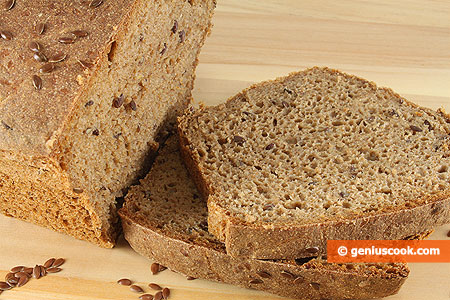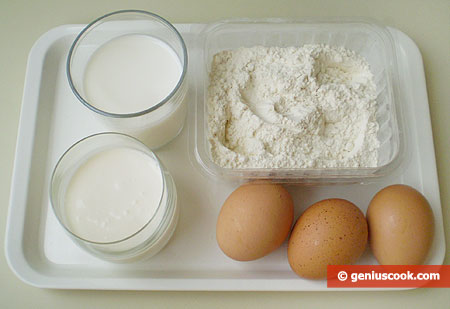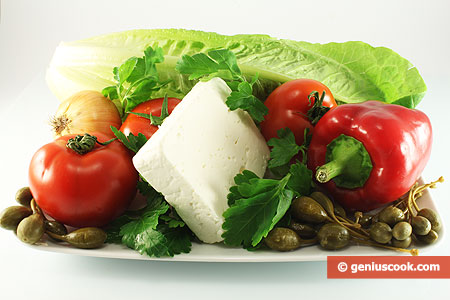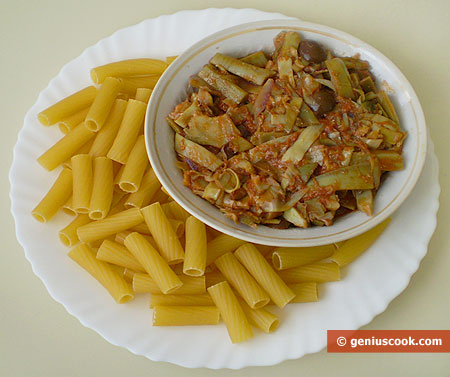Capers
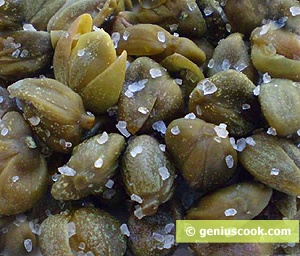 The caper is a genus of plants that belong to the capers family. The genus, in the wide sense, is native to the Mediterranean region, Asia, India, the South Crimea and Caucuses. Capers are cultivated in West and South Europe, India, Philippines, Morocco and North America. The shrub bears honey yielding, white and pink flowers resembling the flowers of the small orchid. Leaves are fleshy and dark green in color. Capers grow spontaneously on friable soils and in cracks of volcanogenic rocks. In Italy, the finest species are found on the Aeolian Islands, the Pantelleria Island, Sicily and in regions neighboring Tunisia. Since ancient times this spicy plant has been reputed to be a passion booster.
The caper is a genus of plants that belong to the capers family. The genus, in the wide sense, is native to the Mediterranean region, Asia, India, the South Crimea and Caucuses. Capers are cultivated in West and South Europe, India, Philippines, Morocco and North America. The shrub bears honey yielding, white and pink flowers resembling the flowers of the small orchid. Leaves are fleshy and dark green in color. Capers grow spontaneously on friable soils and in cracks of volcanogenic rocks. In Italy, the finest species are found on the Aeolian Islands, the Pantelleria Island, Sicily and in regions neighboring Tunisia. Since ancient times this spicy plant has been reputed to be a passion booster.
Harvesting of Capers
Harvesting starts in late spring and finishes at the end of summer. Capers are picked only by hand. Harvesting is carried out every ten days while the same plants produce new fresh buds. An average shrub produces from 500 g to 3 kg of buds (1-6.6lb). The smallest buds, up to 1 cm (0.4 inch) in length, are considered to be of the finest quality and are the most expensive. Salted or pickled caper buds are regarded to as delicacy.
Processing of Capers
The major part of the processing is performed manually. The ideal caper bud must be small, round and firm. Selling the finest capers on the global market is as profitable as selling grapes. Buds longer than 1 cm (0.4 inch) are less valued. To achieve a distinctive taste of capers, buds should age in coarse salt brine for, at least, 90 days. Processed capers have a sour, salty, spicy and astringent taste.
Culinary Uses of Capers
Capers can enrich and give zest to any dish. It is used in many special recipes, but they seem to be the perfect combination with large black olives. Capers also go well with cold beef, fish and poultry. They are ingredients in fresh vegetable salads, sauces and soups. Caper oil extracted from capers improves suntan and protects skin from ultraviolet emission. To make oil, capers are soaked in olive oil and extracted under high pressure.
Capers and Healthy Skin
Capers are both tasty and healthy. They contain a special alkaloid that is used in many drugs to treat skin allergies. Flower buds contain 29% of protein substances, 6% of fats, 0,32% of rutin, up to 150 mg vitamin C, essential oil and pectin. They provide us with vitamins, sugar, organic acids, glycosides and flavonoids. The most important flavonoid is rutin that is named after the plant Ruta graveolens. White coat that is sometimes seen on the surface of dried capers is actually crystals of rutin. Since ancient times, capers have been used in traditional medicine all over the world
Useful Properties of Capers
- Capers have a wound healing effect and may help strengthen heart and ease pain.
- They are choleretic and diuretic agents.
- Capers are reported to lower blood pressure.
- Herbal tea made from caper roots is beneficial against rheumatism.
- Caper roots are chewed to cure teeth ache.
- Caper root tea is drunk against neurosis.
- Caper berries is a remedy against thyroid gland diseases as well as against gum and tooth diseases.
- Oil extracted from capers is a good massage oil.
- Capers have anticarcinogenic properties.
Nevertheless, capers are best known in culinary where they are chiefly used to stimulate digestion and excite appetite.


